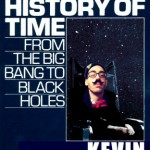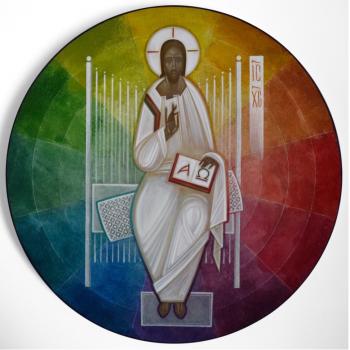The Tree of Life, starring Brad Pitt, Sean Penn, and Jessica Chastain, is written and directed by Terrence Malick. It won the Palme d’Or at the Cannes Film Festival (the highest prize of the festival) and was nominated for three Academy Awards: Best Picture, Best Director, and Best Cinematography.
The film portrays life in a non-linear way, recounting the human experience from the first chapter to the last, from Creation to Consummation. Malick tells this story through the life of one family and one man, inparticular, namely Jack O’Brien (played by Penn), son to Mr. and Mrs. O’Brien (played by Pitt and Chastain). In short, the film captures, generally speaking, what universal life entails – Creation (“In the beginning…”), birth, life in all its complexity, death, and Consummation (“new heavens and new earth”) – through the experience of a few particular characters living in Waco, Texas in the 1950s.
Rather than rehash the story of The Tree of Life, my approach to this review will be to highlight some of primary themes of the film. In a sense it will be like a eulogy – a fitting approach I hope given the subject of the film. This is another way of saying the review will not be comprehensive. Just as one cannot adequately capture the essence of a life, neither (I argue) can I adequately capture the essence of this film in a few paltry words. As with a life, one needs to experience it to appreciate it. So, my hope is that my praising some of my favorite things about the film will enrich your experience of the film.
First, here are three adjectives to describe my impression of the film: wonderful, beautiful, human. Wonderful in that it inspires wonder and awe in the experience of existence. Beautiful in that, despite the tears in the fabric of creation, existence is fundamentally oriented towards a good end. Human in that the film captures the breadth of human life, universally experienced, through a variety of themes, which I will comment on below.
PRAYER
I think Roger Ebert was correct in writing that The Tree of Life “is a form of prayer.”1 The film begins by citing the Book of Job: “Where were you when I laid the foundation of the earth? When the morning stars sang together, and all the sons of God shouted for joy?” (Job 38: 4a, 7b). Quoting Job reinforces the notion that the central prayer of the film (and maybe of life?) is a question: why?
Here are a few examples of prayer from the film. In response to her boy dying, Mrs. O’Brien asks: “Lord, why? Where were you?” “My hope, my God, what did you gain?” “He was in God’s hands the whole time, wasn’t he?” In response to the boy’s drowning in the reservoir, Jack asks: “Was he bad?” “Why should I be good if you aren’t?” The film is seasoned throughout with prayers, mostly interrogatives, which seem to narrate the film. I’d be curious to see if the prayers provide the structure of the entire film.
NATURE & GRACE
Another central theme is the relationship of nature and grace. Mrs. O’Brien suggests that there are two ways of life and you must choose which one you’ll follow:
Grace doesn’t try to please itself. Accepts being slighted, forgotten, disliked. Accepts insults and injuries. Nature only wants to please itself. Get others to please it too. Likes to lord it over them. To have its own way. It finds reasons to be unhappy… when all the world is shining around it… when love is smiling through all things. They taught us that no one who loves the way of grace… ever comes to a bad end. I will be true to you. Whatever comes.
Malick is not poo-pooing nature. The spellbinding, breathtaking nature scenes ranging from the living surface of the sun to the innermost fiber of our living cells directs our gaze to the grace to be found in nature. Instead, as this quote and the corresponding imagery of the scene (an amazing, cascading waterfall and then an equally quotidian tall tree in their yard which is pierced by the setting sun) suggests, Malick is contrasting two orientations towards life: one oriented towards the other (grace) and one oriented towards the self (nature). This theme is fronted at the very beginning and plays itself out in complex and surprising ways throughout.
LIFE’S CHAPTERS
Malick takes us back to the beginning of Life, the first chapter of existence, with scenes of the creation of the cosmos. He proceeds to tell the story of the life of the O’Brien’s framed within the context of this larger meta-story. The story captures the experiences and emotions of a life: birth, saying your first words, the loss of innocence, joy in relationship, sexual desire, hurting others, being hurt, disappointment, forgiveness, frustration, anger, suffering, love, loss, the realization of limitations, work, death, heaven, etc.
The film seems to tell the story through a series of life’s chapters that are often steeped in religious practice including baptism and funerals. A notable omission is a wedding scene. I can only guess at why Malick omitted a wedding scene given the marriage of Mr. and Mrs. O’Brien is so central to the plot of the film. This is especially surprising given the centrality of the wedding/marriage metaphor in the Scriptures for God’s relationship to His people. I’m sure Malick’s omission has a purpose and it would be interesting to explore this further.
I’ll highlight one particular image Malick uses to portray new life. This same imagery appears twice: at birth and at death. The recurring image is that of a person submerged in water swimming to the surface. This first underwater scene occurs just before Jack’s birth – he is a boy swimming through the door in an underwater house toward the light above. It is the entrance of new life into this world. The second underwater scene appears near the end of the film and is similar to the first, although this time it is Mrs. O’Brien swimming up to the surface, wearing a wedding dress. As she swims up, the camera focuses on a mask sinking down into the ocean. I think this second underwater scene portrays new life through death – it’s not clear whether this is physical death or putting to death one’s will in submission to God’s. In any case, this death, this unmasking of the false self is a death that emerges into new life, into exposing one’s true, created self.
MEMORY & THE FORMATION OF THE SELF
As mentioned before, the film unfolds non-linearly. This is done to portray memory. Malick plays with time in an interesting way through this non-linear progression. Throughout the film, it’s difficult to separate past, present and future time. All are very real; all seem present. Rather than resulting in a sense of timeLESSness, I think he captures timeFULness in a very interesting way. I think Geoffrey O’Brien nails what Malick is doing with the flashbacks of memory:
As in all that follows, the effect is of seeing a memory staged, indelible in the realism of its details but edited and compressed over time, the relevant bits run together and the dross filtered out: the world as processed by the mind, with finally only the bright bits magnetized by emotion remaining to flash against darkness.2
Malick shows how memory infuses and shapes our present. The recalling of memory and subsequent retelling and reforming of our story shapes our very self. Rehearsing the narrative of our lives helps us to make sense of the world and our place in it. That is, it helps us to find (or make?) the meaning of our own stories. This sense of timeFULness is especially present in the scenes of heaven where Young Jack and Old Jack are together – each seemingly necessary to capture the fullness of the character.
GOD
Malick captures the invisible visibleness of God brilliantly in this film. God is the silent interlocutor who appears without appearing. His silence is not taken by the characters as absence. God transcends the world of the film and yet is found everywhere and in everything – that is, for those whom He seeks and who seek Him. God is present in nature, particularly in the scenes of water and especially of light. This emphasizes the notion that grace and nature are not mutually exclusive.
In many ways, the film captures the reciprocal pursuit of God and man. God initiates and man responds through life. God seeks humanity and, in turn, men and women seek him out while he may be found. “Are you watching me? I want to know what you are. I want to see what you see.” “What was it you showed me? I didn’t know how to name you then. But I see it was you. Always you were calling me.”
OTHER THEMES
In addition to not attempting to provide a comprehensive summary of the film, I’ve also left out a few themes that are absolutely central to the film including suffering, love, and relationships (Creator & created, husband & wife, father & son, mother & son, brother & brother, humanity & world). Another motif worth exploring is obviously the title, The Tree of Life, and where this phrase appears in the Bible (Gen 2:9; 3:22, 24; Prov 3:18; 11:30; 13:12; 15:4; Rev 2:7; 22:2, 14, 19). If you’ve made it this far and have seen the film, I’d love to hear your thoughts on these themes.
Malick does an absolutely masterful job portraying the span of human life through the complexity of human personality and relationship. This is a profound movie worthy of several viewings. If you let it, I really do think it can enrich or even shape your life.
I’ll end with an exhortation from Mrs. O’Brien, which we would all to well do heed: “The only way to be happy is to love. Unless you love, your life will flash by. Do good to them. Wonder. Hope.”
1. Roger Ebert, “A Prayer Beneath The Tree of Life,” RogerEbert.com, May 17, 2011.
2. Gregory O’Brien, “The Variety of Movie Experience,” The New York Review of Books, July 14, 2011. Special thanks to my homeboy Scott Jones for sharing this quote with me!












